#serverless Computing
Explore tagged Tumblr posts
Text

40 notes
·
View notes
Text
What is Serverless Computing?
Serverless computing is a cloud computing model where the cloud provider manages the infrastructure and automatically provisions resources as needed to execute code. This means that developers don’t have to worry about managing servers, scaling, or infrastructure maintenance. Instead, they can focus on writing code and building applications. Serverless computing is often used for building event-driven applications or microservices, where functions are triggered by events and execute specific tasks.
How Serverless Computing Works
In serverless computing, applications are broken down into small, independent functions that are triggered by specific events. These functions are stateless, meaning they don’t retain information between executions. When an event occurs, the cloud provider automatically provisions the necessary resources and executes the function. Once the function is complete, the resources are de-provisioned, making serverless computing highly scalable and cost-efficient.
Serverless Computing Architecture
The architecture of serverless computing typically involves four components: the client, the API Gateway, the compute service, and the data store. The client sends requests to the API Gateway, which acts as a front-end to the compute service. The compute service executes the functions in response to events and may interact with the data store to retrieve or store data. The API Gateway then returns the results to the client.
Benefits of Serverless Computing
Serverless computing offers several benefits over traditional server-based computing, including:
Reduced costs: Serverless computing allows organizations to pay only for the resources they use, rather than paying for dedicated servers or infrastructure.
Improved scalability: Serverless computing can automatically scale up or down depending on demand, making it highly scalable and efficient.
Reduced maintenance: Since the cloud provider manages the infrastructure, organizations don’t need to worry about maintaining servers or infrastructure.
Faster time to market: Serverless computing allows developers to focus on writing code and building applications, reducing the time to market new products and services.
Drawbacks of Serverless Computing
While serverless computing has several benefits, it also has some drawbacks, including:
Limited control: Since the cloud provider manages the infrastructure, developers have limited control over the environment and resources.
Cold start times: When a function is executed for the first time, it may take longer to start up, leading to slower response times.
Vendor lock-in: Organizations may be tied to a specific cloud provider, making it difficult to switch providers or migrate to a different environment.
Some facts about serverless computing
Serverless computing is often referred to as Functions-as-a-Service (FaaS) because it allows developers to write and deploy individual functions rather than entire applications.
Serverless computing is often used in microservices architectures, where applications are broken down into smaller, independent components that can be developed, deployed, and scaled independently.
Serverless computing can result in significant cost savings for organizations because they only pay for the resources they use. This can be especially beneficial for applications with unpredictable traffic patterns or occasional bursts of computing power.
One of the biggest drawbacks of serverless computing is the “cold start” problem, where a function may take several seconds to start up if it hasn’t been used recently. However, this problem can be mitigated through various optimization techniques.
Serverless computing is often used in event-driven architectures, where functions are triggered by specific events such as user interactions, changes to a database, or changes to a file system. This can make it easier to build highly scalable and efficient applications.
Now, let’s explore some other serverless computing frameworks that can be used in addition to Google Cloud Functions.
AWS Lambda: AWS Lambda is a serverless compute service from Amazon Web Services (AWS). It allows developers to run code in response to events without worrying about managing servers or infrastructure.
Microsoft Azure Functions: Microsoft Azure Functions is a serverless compute service from Microsoft Azure. It allows developers to run code in response to events and supports a wide range of programming languages.
IBM Cloud Functions: IBM Cloud Functions is a serverless compute service from IBM Cloud. It allows developers to run code in response to events and supports a wide range of programming languages.
OpenFaaS: OpenFaaS is an open-source serverless framework that allows developers to run functions on any cloud or on-premises infrastructure.
Apache OpenWhisk: Apache OpenWhisk is an open-source serverless platform that allows developers to run functions in response to events. It supports a wide range of programming languages and can be deployed on any cloud or on-premises infrastructure.
Kubeless: Kubeless is a Kubernetes-native serverless framework that allows developers to run functions on Kubernetes clusters. It supports a wide range of programming languages and can be deployed on any Kubernetes cluster.
IronFunctions: IronFunctions is an open-source serverless platform that allows developers to run functions on any cloud or on-premises infrastructure. It supports a wide range of programming languages and can be deployed on any container orchestrator.
These serverless computing frameworks offer developers a range of options for building and deploying serverless applications. Each framework has its own strengths and weaknesses, so developers should choose the one that best fits their needs.
Real-time examples
Coca-Cola: Coca-Cola uses serverless computing to power its Freestyle soda machines, which allow customers to mix and match different soda flavors. The machines use AWS Lambda functions to process customer requests and make recommendations based on their preferences.
iRobot: iRobot uses serverless computing to power its Roomba robot vacuums, which use computer vision and machine learning to navigate homes and clean floors. The Roomba vacuums use AWS Lambda functions to process data from their sensors and decide where to go next.
Capital One: Capital One uses serverless computing to power its mobile banking app, which allows customers to manage their accounts, transfer money, and pay bills. The app uses AWS Lambda functions to process requests and deliver real-time information to users.
Fender: Fender uses serverless computing to power its Fender Play platform, which provides online guitar lessons to users around the world. The platform uses AWS Lambda functions to process user data and generate personalized lesson plans.
Netflix: Netflix uses serverless computing to power its video encoding and transcoding workflows, which are used to prepare video content for streaming on various devices. The workflows use AWS Lambda functions to process video files and convert them into the appropriate format for each device.
Conclusion
Serverless computing is a powerful and efficient solution for building and deploying applications. It offers several benefits, including reduced costs, improved scalability, reduced maintenance, and faster time to market. However, it also has some drawbacks, including limited control, cold start times, and vendor lock-in. Despite these drawbacks, serverless computing will likely become an increasingly popular solution for building event-driven applications and microservices.
Read more
4 notes
·
View notes
Text
Serverless Computing: Streamlining Web Application Deployment
0 notes
Text
Serverless computing revolutionizes cloud architecture by enabling automatic scaling, cost efficiency, and faster development without managing infrastructure, making it a game-changer for modern applications.
0 notes
Text
Serverless Computing
Serverless Computing is a cloud computing model that allows developers to build and run applications without managing server infrastructure. In this model, cloud providers automatically handle the provisioning, scaling, and management of servers, allowing businesses to focus solely on writing code. This means developers can deploy functions or services without worrying about server maintenance, reducing operational costs and complexity. Serverless Computing enables scalable and cost-efficient execution of applications based on demand, as resources are allocated dynamically. Billing is typically done on a pay-as-you-go basis, where businesses only pay for the actual resources used, ensuring a more efficient cost structure. With serverless computing, businesses benefit from faster deployment, enhanced scalability, and the ability to adapt quickly to changing workloads. Additionally, serverless architecture supports microservices, enabling more modular development and improved agility in delivering applications. Intelegain Technologies provides robust serverless computing solutions, helping businesses leverage this technology to improve their operational efficiency. By utilizing serverless computing, companies can accelerate time-to-market while optimizing resources. Whether it’s for building cloud-native applications or enhancing existing systems, Intelegain Technologies ensures seamless integration and management of serverless solutions to drive business growth.
0 notes
Text
Cloud Migration Service: A Seamless Transition to the Cloud
In today's digital landscape, businesses are increasingly adopting cloud solutions to enhance scalability, flexibility, and cost efficiency. A Cloud Migration Service plays a crucial role in ensuring a smooth transition from on-premises infrastructure to cloud environments, minimizing risks and maximizing operational benefits.
What is a Cloud Migration Service?
A Cloud Migration Service involves the process of transferring data, applications, and IT resources from traditional systems to a cloud-based infrastructure. These services provide businesses with the necessary tools, strategies, and expertise to migrate efficiently while maintaining security and compliance.

Benefits of Cloud Migration Services
1. Enhanced Scalability
With cloud solutions, businesses can scale resources up or down based on demand, reducing unnecessary costs and ensuring optimal performance.
2. Cost Efficiency
Cloud migration eliminates the need for expensive on-premises hardware and maintenance, enabling businesses to pay only for what they use.
3. Improved Security
Leading cloud providers implement robust security measures, including encryption, access controls, and compliance frameworks, to protect sensitive business data.
4. Disaster Recovery and Business Continuity
Cloud migration ensures data redundancy and quick recovery solutions, minimizing downtime and enhancing business resilience.
Steps Involved in a Cloud Migration Service
1. Assessment and Planning
A thorough evaluation of existing IT infrastructure helps identify workloads best suited for migration and develop a strategic roadmap.
2. Selecting the Right Cloud Model
Organizations can choose from Public, Private, Hybrid, or Multi-Cloud environments based on their business needs.
3. Executing the Migration
A phased migration approach minimizes disruptions, ensuring a smooth transition of applications and data.
4. Testing and Optimization
Post-migration testing is crucial to ensure performance, security, and compliance are maintained in the new cloud environment.
Overcoming Common Cloud Migration Challenges
Data Security Risks: Implementing encryption and access controls.
Application Downtime: Adopting a phased or hybrid migration strategy.
Cost Management: Utilizing cloud cost optimization tools.
Compatibility Issues: Assessing and refactoring applications for cloud readiness.
Choosing the Right Cloud Migration Service Provider
When selecting a Cloud Migration Service provider, businesses should consider:
Expertise in cloud platforms like AWS, Azure, or Google Cloud.
Security and compliance certifications.
Scalability options and 24/7 support.
Conclusion
Migrating to the cloud can be a game-changer for businesses looking to innovate and grow. A professional Cloud Migration Service ensures a hassle-free transition, enhanced security, and cost-efficient operations. With the right strategy and expert guidance, organizations can unlock the full potential of cloud computing for a competitive edge in the digital era.
#Cloud Migration service#Cloud Migration and Modernization service#Infrastructure as a Service (IaaS)#Cloud Infrastructure automation and monitoring#Serverless Computing#Disaster Recovery automation service
1 note
·
View note
Text
#Serverless Application#Serverless Services#serverless technology#serverless Computing#Azure Functions#Python
0 notes
Text
Zukunftsperspektiven cloud-basierter Analysedienste: Trends & Technologien
In der heutigen digitalen Ära gewinnt die Datenanalyse zunehmend an Bedeutung. Unternehmen sind gezwungen, große Mengen an Daten in Echtzeit zu verarbeiten und zu analysieren, um wettbewerbsfähig zu bleiben. Cloud-basierte Analysedienste bieten eine flexible und skalierbare Lösung, um diese Anforderungen zu erfüllen. In diesem Artikel betrachten wir die aktuellen Trends sowie innovative…
#Automatisierung#Blockchain#Datenanalyse#Datenschutz#Datenschutzgesetze#Datensicherheit#Edge Computing#Führung#IoT#Machine Learning#Serverless#Serverless Computing#Sicherheitsprotokolle#Verschlüsselung
0 notes
Text
5 Key Cloud Computing Trends to Watch

Stay ahead of the curve with the latest cloud computing trends. Explore the top 5 key trends shaping the future of cloud technology, including AI integration, multi-cloud strategies, and enhanced security solutions for businesses. Visit now to read 5 Key Cloud Computing Trends to Watch
#Cloud Computing Trends#cloud computing industry#Edge Computing#Multi-Cloud Strategies#Hybrid Cloud Strategies#Serverless Computing#serverless computing benefits#hybrid cloud#hybrid cloud solutions#future of cloud computing#trends in cloud computing#hybrid cloud computing trends
0 notes
Text
Discover how serverless computing is transforming IT infrastructure by offering scalability, cost efficiency, and simplified management, allowing businesses to focus on innovation rather than server maintenance. Explore the benefits and challenges of this emerging technology in our comprehensive guide.
1 note
·
View note
Text
All About The Key Types Of Cloud Computing

In Dave Eggers's novel The Circle, Mae Holland, a young woman, secures a prestigious position at a leading tech company called Circle, known for its cutting-edge internet services and products. As Mae gets increasingly involved in the company's culture, which emphasizes radical transparency and extensive sharing of personal information online, the novel delves into the immense potential of technologies like cloud computing, social media, and the Internet of Things. These technologies have become an integral part of our lives, even though many may not realize their impact.
Take cloud computing, for example. It underpins most of the online applications we use daily, whether for emailing, streaming content, or conducting online transactions. Cloud computing enables us to share and access data, software, and services remotely over the internet, making our digital interactions smoother and more convenient.
In this article, we’ll explore the different types of cloud computing so that next time you encounter the term, you'll have a solid grasp of the technology that powers our online world.
Introduction: When was the last time you used a pen drive to share files with a friend? In today's world of streaming platforms and the internet, that seems like a distant memory. The internet, largely driven by cloud computing, has taken over many of our daily activities, though this transformation has occurred in less than a decade. Cloud computing has enabled numerous applications that we rely on today.
Did you know that the global cloud computing market is projected to reach $1.2 trillion by 2028, according to Markets and Markets? This highlights how cloud computing is central to our daily lives. But what exactly is cloud computing? Let's dive in.
What Is Cloud Computing? Cloud computing is a revolutionary technology that has reshaped how we interact with data and applications. Instead of relying on traditional on-premises infrastructure, cloud computing uses a network of remote servers to deliver services over the Internet. These services include data storage, servers, databases, networking, and software, all hosted and managed by a cloud service provider.
The real power of cloud computing lies in its accessibility and scalability. Users can access their data and applications from anywhere with an internet connection, without needing to manage the underlying infrastructure. This on-demand availability of computing resources eliminates the constraints of physical hardware and offers users unmatched flexibility.
To better understand cloud computing's architecture, let's look at the key types of cloud computing models.
Types of Cloud Computing Models: Within the cloud computing landscape, several models cater to various needs:
Private Cloud: Imagine a small data center right in your home. A private cloud operates similarly, providing secure access to your personal files from anywhere, emphasizing data control and privacy.
Public Cloud: Public clouds are vast infrastructures owned and managed by third-party providers like Amazon Web Services (AWS), Microsoft Azure, and Google Cloud Platform (GCP). These providers offer a range of services on a pay-as-you-go basis, making them a cost-effective choice for businesses seeking scalability.
Hybrid Cloud: Hybrid clouds combine private and public cloud environments, allowing organizations to keep sensitive data on private infrastructure while using public clouds for less critical workloads. This approach is ideal for businesses with diverse needs.
Community Cloud: This collaborative model allows organizations with shared interests to pool resources and create a cloud environment tailored to their needs. It offers more control and security than public clouds.
Multi-Cloud: Multi-cloud strategies involve using multiple cloud services from different providers. This approach helps organizations avoid vendor lock-in and optimize costs by selecting the best services from each provider. According to Flexera, nearly 90% of companies have adopted a multi-cloud strategy for greater flexibility.
Types of Cloud Computing Services: To harness the power of the cloud, there are various services available:
Infrastructure as a Service (IaaS): IaaS provides virtualized resources like computing power, storage, and networks, giving users full control over their IT infrastructure. It's like renting a fully equipped workshop to build and customize your projects.
Platform as a Service (PaaS): PaaS offers a platform with pre-built tools and frameworks for developers to create and deploy applications without worrying about the underlying infrastructure. It's like a pre-stocked kitchen for app development.
Software as a Service (SaaS): SaaS delivers complete, ready-to-use applications hosted by the provider, accessible via a web browser or API. It’s perfect for businesses prioritizing convenience without the technical details.
Function as a Service (FaaS): Also known as serverless computing, FaaS allows developers to deploy individual functions or code that run in response to events. This eliminates the need for server management and lets developers focus on writing valuable code.
Conclusion: From personal clouds to multi-cloud strategies, cloud computing is far more than a buzzword; it’s an all-encompassing technology that lets us store, access, and process information effortlessly. As cloud computing continues to evolve, its various types will further enhance our daily lives. What a time to be alive!
0 notes
Text
Skyrocket Your Efficiency: Dive into Azure Cloud-Native solutions
Join our blog series on Azure Container Apps and unlock unstoppable innovation! Discover foundational concepts, advanced deployment strategies, microservices, serverless computing, best practices, and real-world examples. Transform your operations!!
#Azure App Service#Azure cloud#Azure Container Apps#Azure Functions#CI/CD#cloud infrastructure#cloud-native applications#containerization#deployment strategies#DevOps#Kubernetes#microservices architecture#serverless computing
0 notes
Video
youtube
Master the Google Cloud Run Serverless Service | Run Nodejs API in Cloud... Full Video Link - https://youtu.be/59jF_IaQHfE Check out this new video on the CodeOneDigest YouTube channel! Learn how to setup google cloud run #serverless service. Run #nodejs API in #cloudrun service. #codeonedigest @codeonedigest @googlecloud @GoogleCloud_IN @GoogleCloudTech @GoogleCompute @GooglecloudPL #googlecloud #googlecomputeengine #virtualmachine #nodejsapi
#youtube#google cloud#google cloud platform#cloud run#serverless computing#serverless#google cloud run service#cloud run service#cloud run serverless service#deploy nodejs api in google cloud run
0 notes
Text
Unraveling the 5 Layers of Software Development
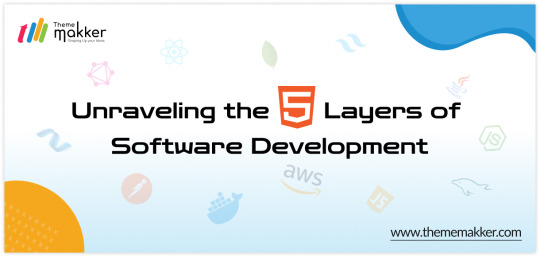
In the realm of software development services, every application is built upon a foundation of interconnected layers, each serving a specific purpose in delivering functionality to end-users. Understanding these layers and the technologies that power them is crucial for developers aiming to create robust and efficient software solutions. In this blog, we'll explore the five key layers of software architecture: User Interface (UI), Application Programming Interface (API), Database (DB), Business Logic, and Hosting, along with examples of technologies commonly used in each layer.
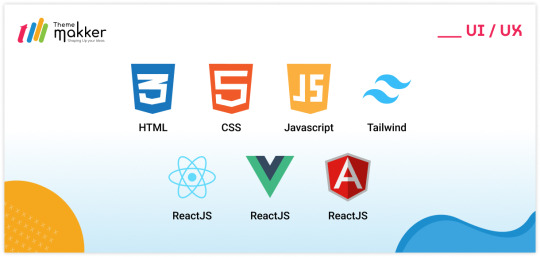
User Interface (UI): The UI layer is what users interact with directly. It encompasses everything from the visual design to the user experience (UX). Technologies used in this layer focus on creating intuitive, responsive, and aesthetically pleasing interfaces. Some popular UI Design technologies include:
HTML/CSS/JavaScript: These front-end technologies form the backbone of web-based UIs. HTML defines the structure, CSS styles the elements, and JavaScript adds interactivity.
React.js/Vue.js/Angular: These JavaScript frameworks are used to build dynamic and interactive user interfaces for web applications.
Swift/Kotlin: For mobile application development, languages like Swift (for iOS) and Kotlin (for Android) are used to develop native user interfaces.
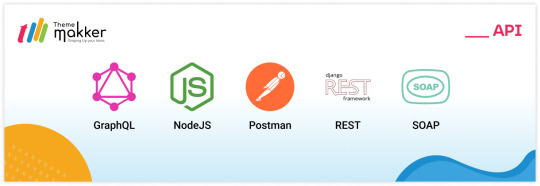
Application Programming Interface (API): The API layer acts as an intermediary between the UI and the business logic, enabling communication and data exchange. APIs define the endpoints and protocols through which different software components interact. Common technologies used in API development services include:
RESTful APIs: Representational State Transfer (REST) is a popular architectural style for designing networked applications. RESTful APIs use HTTP methods like GET, POST, PUT, and DELETE to perform operations on resources.
GraphQL: An alternative to REST, GraphQL provides a more flexible and efficient approach to querying and manipulating data. It allows clients to request only the data they need, reducing over-fetching and under-fetching.
Express.js/Django/Rails: Frameworks like Express.js (for Node.js), Django (for Python), and Rails (for Ruby) are commonly used to build web APIs quickly and efficiently.
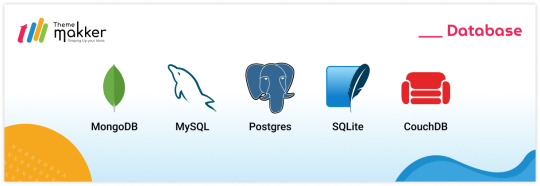
Database (DB): The database layer is responsible for storing, retrieving, and managing data. It provides a persistent storage solution for an application's information. Various types of databases exist, including relational databases, NoSQL databases, and in-memory databases. Some popular database technologies include:
MySQL/PostgreSQL: Relational database management systems (RDBMS) like MySQL and PostgreSQL are widely used for structured data storage and management.
MongoDB: A popular NoSQL database, MongoDB is designed for storing unstructured or semi-structured data in JSON-like documents.
Redis: An in-memory data structure store, Redis is often used as a caching layer or for real-time data processing.
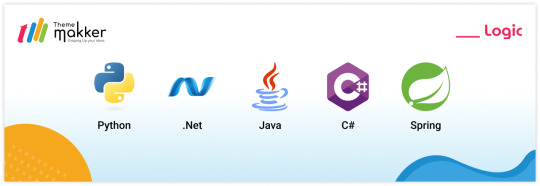
Business Logic: The business logic layer contains the application's core functionality and rules. It processes requests from the UI, interacts with the database, and performs the necessary operations to fulfill user actions. While business logic can be implemented in various programming languages, some technologies commonly used for this layer include:
Java/C#: Object-oriented languages like Java and C# are often chosen for building robust and scalable business logic components.
Node.js/Python: JavaScript (with Node.js) and Python are also popular choices, especially for applications requiring agility and rapid development.
Spring/.NET Core: Frameworks like Spring (for Java) and .NET Core (for C#) provide tools and libraries for building enterprise-grade business logic components.
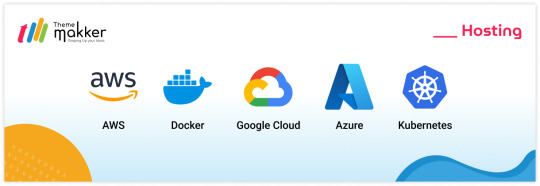
Hosting: The hosting layer encompasses the infrastructure and environment where the application runs. It includes servers, cloud platforms, containers, and other deployment options. Popular hosting technologies and platforms include:
Amazon Web Services (AWS)/Microsoft Azure/Google Cloud Platform (GCP): These cloud service providers offer a range of hosting solutions, including virtual machines, containers, and serverless computing.
Docker/Kubernetes: Containerization technologies like Docker and orchestration platforms like Kubernetes provide efficient ways to package, deploy, and manage applications across different environments.
Heroku/Netlify/Vercel: These platforms offer simplified hosting solutions specifically tailored for web applications, providing features like continuous deployment, scalability, and managed infrastructure.
In conclusion, navigating the various layers of software architecture requires a comprehensive understanding of each layer's purpose and the technologies that power them. By leveraging the right technologies for UI, API, DB, logic, and hosting, developers can build robust, scalable, and maintainable software solutions that meet the needs of modern users and businesses.
#webdesign#mobileappdevelopment#appdevelopment#web developers#webdevelopment#youtube#apiintegration#thememakker#webdevelopmentcompany#hosting#database#serverless computing#api#uiuxdesign#ui#ux#aws#ror#docker#java#kubernetes#hire developers#webservices
0 notes
Text
Business Intelligence Solutions: Unleashing the Power of Managed Analytics

In today's dynamic business landscape, the effective utilization of data is pivotal for informed decision-making and sustained growth. Business Intelligence (BI) solutions have emerged as a cornerstone, offering organizations the ability to glean actionable insights from their data. This article explores the transformative impact of BI solutions and how managed analytics, coupled with outsourced IT management, is reshaping the way businesses harness the power of data.
1. Proactive IT Support and Managed IT Services:
BI solutions thrive in an environment supported by proactive IT services. Managed IT services, which include proactive support and maintenance, ensure the seamless operation of BI tools. This proactive approach not only enhances the reliability of analytics but also minimizes downtime, allowing businesses to make real-time decisions.
2. Advanced Analytics and Data Visualization Services:
Managed analytics encompass advanced analytics services that go beyond basic reporting. Data visualization services play a crucial role, translating complex data sets into visually appealing and understandable insights. This facilitates better communication and comprehension of data-driven findings across all levels of an organization.
3. Cloud Management Solutions and Migration Strategies:
The integration of cloud management solutions is a game-changer for BI. Cloud migration solutions offer scalability, flexibility, and cost-efficiency. Managed BI services leverage cloud optimization solutions, ensuring that businesses make the most of cloud resources while maintaining peak performance.
4. Data Science Solutions and Hybrid Cloud Integration:
BI solutions often involve intricate data science methodologies. Managed analytics extend to data science solutions, enabling organizations to employ predictive analytics and machine learning for more accurate forecasting. Hybrid cloud solutions provide the necessary infrastructure for hosting and processing data across different environments securely.
5. IT Consultation Services and Strategic Managed Services:
Strategic IT consultation services are instrumental in aligning BI strategies with overall business objectives. Managed services, including serverless computing and big data consulting, are designed to optimize the performance of BI tools, ensuring they adapt to evolving business requirements.
6. Cloud Consulting Services and Holistic Cloud Management:
BI solutions benefit from specialized cloud consulting services. These services guide organizations in selecting the most suitable cloud platforms and architectures for their BI needs. Holistic cloud management services oversee the entire cloud ecosystem, ensuring optimal performance and security.
In conclusion, the convergence of BI solutions and managed analytics is reshaping the way businesses interpret and leverage their data. With the right blend of outsourced IT management, advanced analytics, and cloud solutions, organizations can unlock the full potential of their data, gaining a competitive edge in today's data-driven era.
#it consultation services#managed service#serverless computing#big data consulting#business intelligence solutions#Scholarnest#Scholarnest Technologies#cloud consulting services#cloud management#cloud management services#data visualization services#managed it services#advanced analytics services#cloud management solution#cloud migration solutions#cloud optimization solutions#data science solutions#hybrid cloud solutions#outsourced it management#proactive it support
0 notes
Text
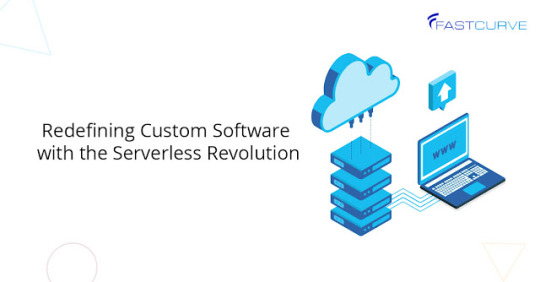
Serverless computing and the future of custom software
'Serverless Computing and the Future of Custom Software' provides a concise overview of the paradigm shift from traditional server-based architectures. Emphasizing benefits like simplified development, scalability, and cost-efficiency, the piece offers insights into the evolving landscape and the future possibilities of custom software development.
0 notes